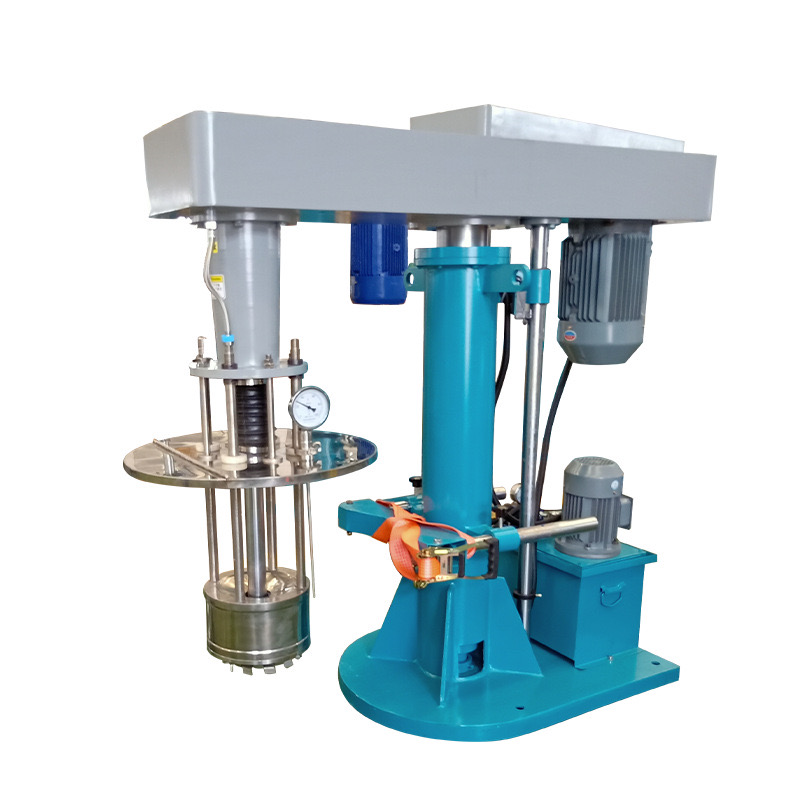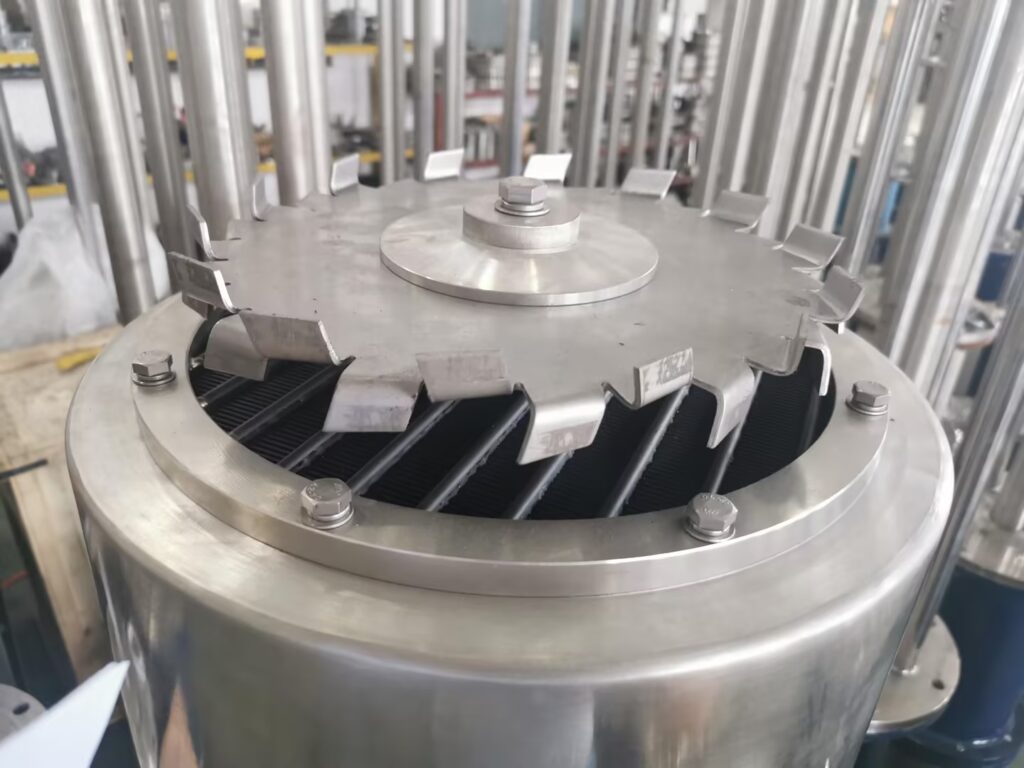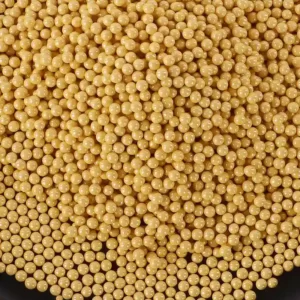Within manufacturing operations, enhancing equipment performance is pivotal for boosting productivity. Immersion mills, particularly, stand out in Milling beads play a critical role in enhancing the effectiveness of bead mills and basket mills. operations by delivering fine dispersion and consistent particle uniformity.
These machines function by submerging a grinding basket of milling beads into a liquid medium, promoting efficient particle diminution through mechanical interaction.
This method provides a notable edge over conventional milling processes, such as bead mills and high-speed mixers.
By accommodating varied viscosities, it assures uniform grind quality. The immersion mill’s efficiency emanates from its dual capacity to mix and grind, resulting in a more efficient production cycle.
Technological advancements significantly enhance the performance of immersion mills. Exploring further, the emphasis on improving advanced mill technologies such as the basket mill and immersion mill has led to significant advancements in paint dispersion and manufacturing processes utilizing liquid pumps and impellers for efficient grinding and bead dispersion.
Enhancing Paint Quality With Mill Technology

Improving paint quality hinges on the strategic use of advanced mill systems, emphasizing precision in pigment dispersion. By achieving an even distribution of pigment particles, the process sustains emulsion stability, vital for producing high-caliber coatings.
Accurate control over particle size distribution enhances color uniformity and significantly improves product quality in dispersing and grinding applications. Utilizing advanced equipment like high-speed mixers and precision grinding machines facilitates energy-efficient operations, aligning with specific material needs.
This effective approach ensures a consistent particle size distribution, crucial to maintaining elevated standards of quality. By harnessing these technologies, manufacturers attain superior product quality, opening doors for innovative uses in the industry.
Key Components Of An Efficient Grinding Machine
Recognizing advancements in technologies that significantly boost mill outcomes sets the foundation for understanding the integral components necessary for efficient machines. Analyzing these technologies in paint and beyond, hydraulic systems are essential for their precision and stability, which play a pivotal role in various processes.
Through reducing energy consumption, these systems enhance sustainability—a critical factor in today’s environmentally conscious manufacturing landscapes. Impeller design and material choice are integral as well, directly influencing the material’s flow dynamics and durability.
Appropriate impeller selection reduces wear and increases lifespan, minimizing operational disruptions. Advanced bead technology in grinding processes aids in achieving finer particle sizes, boosting the overall quality of the output in applications like paint production.
The technology employed focuses on achieving uniform distribution and mixing, pivotal for manufacturing industries. High-speed mixers are crucial as they ensure even particle distribution, which is important for achieving high-quality results. These, combined with immersion mills, promote optimal results across various production needs. As milling progresses, implementing systems such as basket or immersion mills ensures effective dispersion and grinding of materials like steel in water, with Temperature control is critical in processes involving solvents to maintain product quality during milling. management being key in controlling particle size and other product specifications.
Importance of Hydraulic Systems
Hydraulic systems, central to operational efficiency, reduce energy waste. Through precise control, they improve stability in a variety of conditions, becoming indispensable in the design of grinding machines.
Role of Impeller Design
Impeller design and material significantly affect material flow and extend lifespan. Proper selection of materials for the impeller ensures longevity and optimal performance in grinding activities.
Advancements in Bead Technology
Bead technology enables finer particle sizes, enhancing quality output. These advancements directly contribute to the superior quality of the finished products by achieving a uniform particle size distribution.
Efficiency of High-Speed Mixers

High-speed mixers maintain consistent particle distribution in manufacturing processes. Their integration, alongside immersion mills, ensures highly efficient grinding and uniform dispersion, adapting to various production requirements.
Understanding The Role Of Impellers In Milling
When examining the key factors that influence system efficiency, the design and role of impellers are vital. These components significantly affect the dynamics of particle processing, directly determining the success of milling operations.
Impellers are crafted with precise attention to geometry and material quality to enhance particle size reduction and evenly distribute shear forces. This precision is crucial for maintaining uniform particle size distribution, ensuring the final product meets desired standards.
By promoting smooth pigment dispersion within applications like coatings, impellers help avoid aggregation that could harm product quality. Their well-planned design guarantees consistent performance, even in varying operational conditions.
Regular maintenance and correct calibration of these components are crucial to avoid performance decline and extend the life of milling tools. Innovations in impeller technology are constantly being introduced, improving the energy efficiency and throughput of milling systems. These advancements help lower operational costs while increasing output, underlining the essential role of impellers in today’s manufacturing landscape.
How Vacuum Systems Improve Milling Processes
Enhancing Efficiency in Particle Extraction
Within the realm of refining milling operations, incorporating advanced vacuum systems stands out as essential. As established in discussions on impeller design and the efficiency of high-speed mixers, these systems further refine particle processing by improving extraction and management of fine particles. Achieving the consistent quality paramount in manufacturing, vacuum technology adeptly manages the thermal aspects crucial to maintaining material integrity.
Cost-Effectiveness and Quality Control
This approach not only optimizes the energy used but also aligns with cost reduction strategies, addressing operational expenses during complex procedures such as grinding and dispersing within milling systems. Notably, bead mills and related technologies, including systems like Z-mixer grinding equipment, become more efficient, enhancing productivity while minimizing maintenance demands.
Temperature Regulation and Product Outcomes
Exploring the synergistic roles of advanced suction and traditional methods sheds light on the holistic advancements in today’s milling landscape. Maintaining pigment stability with precise temperature regulation becomes vital in applications, ranging from ink production and coatings to pharmaceutical uses. The ability to deploy these technologies effectively ensures that high-quality results are consistent, tapping into the strengths of machinery, impellers, and evolving grinding media. Such systems underscore the growing importance of technological integration in achieving uniform particle-size distribution and superior product outcomes.
| Advanced Suction Technology | Conventional Techniques |
|---|---|
| Enhances particle removal performance | Less effective in particle removal |
| Manages thermal conditions effectively | Less control over thermal conditions |
| Reduces operational expenditures | Higher operational costs |
| Optimized processing in bead and basket mills | Standard processing efficiency |
The Impact Of Temperature On Pigment Dispersion
Temperature control in milling is crucial for pigment processing. This builds upon insights into impeller dynamics and the integration of vacuum systems. Variations in temperature significantly affect pigment dispersion, impacting the physical and chemical properties of materials. This influence extends to color quality, a key concern for manufacturers committed to creating consistent visual and performance attributes.
One major challenge is the risk of agglomeration. Proper management of temperature fluctuations, ideally achieved through advanced equipment like immersion mills, can mitigate this risk. These machines rely on precise temperature regulation to prevent pigments from clumping together, promoting a uniform distribution throughout the product. This uniformity is essential for achieving desired results and reducing the need for extra processing steps.
Technological advancements are pivotal in controlling temperature within the milling process. High-speed mixers, often used in industrial coatings, include sophisticated monitoring systems. These systems adjust temperatures in real-time to meet specific dispersion requirements. Coupled with grinding beads in a liquid environment, they create efficient cycles that facilitate homogenization and narrow particle-size distribution. Companies such as Z-mixer produce specialized tools for pilot plants emphasizing such precision, highlighting the importance of stringent temperature management for optimal pigment dispersion.
In summary, the impact of temperature on pigment dispersion underscores the necessity of technological integration in modern manufacturing processes. By ensuring controlled temperature environments, industries can effectively manage particle-size distribution, maintain the stability and quality of pigments, and ultimately produce superior products. This meticulous approach exemplifies advances in milling and grinding technologies that continue to transform the landscape of industrial manufacturing.
Optimizing Fluid Dynamics In Immersion Mills
Precision in managing liquid dynamics within immersion mills is crucial for enhancing production efficiency. Advances in understanding fluid behavior during milling processes build on key themes, such as temperature control and vacuum systems, which play a significant role in ensuring high-quality output.
Controlling flow patterns and turbulence within these systems is essential for increased productivity and substantial energy savings. High-speed operations in grinding technology harness these principles, enabling fluid flows that support effective dispersion results.
Role of Fluid Dynamics
Fluid dynamics in immersion milling entails analyzing the movement of liquids and particles as they circulate. A key aspect is regulating flow rates to maintain optimal operational conditions. Managing turbulence is critical to achieving smooth dispersion, showcasing the adaptable capabilities of modern milling machinery.
Enhancing Performance Strategies
To boost performance in milling operations, utilizing grinding technology with a high-speed impeller and a milling basket filled for efficient dispersion is essential. Adaptable horizontal bead mills offer a versatile and effective solution as they dynamically adjust during the milling process. This flexibility is a hallmark of our products, ensuring precision that meets varied processing needs.
Fluid Dynamics in Milling
- Excelling in fluid dynamics significantly elevates operational progress and output.
- Effective control over flow patterns leads directly to energy savings.
- Fluid flow rate management is crucial for maintaining stable conditions.
- Horizontal bead mills with adaptable systems yield flexible and superior dispersion results.
Advantages Of Using Steel Beads In Grinding

Understanding the role of fluid dynamics and temperature control, steel beads introduce a powerful advantage in grinding processes. Especially effective within horizontal Bead mills and basket mills, utilizing steel beads, enhance precision and efficiency across diverse industries by optimizing the breakdown of particles.
Enhanced Durability
- Steel beads offer outstanding wear resistance, reducing the frequency of media replacements and ensuring consistent operational efficiency over extended periods.
- Their robust design withstands the rigors of intensive grinding, presenting a cost-effective solution by limiting maintenance needs and minimizing downtime.
Consistent Efficiency
- With high density resulting in efficient grinding, steel beads reduce processing times, thereby boosting production throughput.
- They enable superior energy transfer, promoting uniform particle sizes and effective grinding. The innovative design of vacuum baskets in paint manufacturing, notably in horizontal mills, simplifies particle size adjustments, enhancing operational precision. This feature is vital in achieving the desired consistency in fine grinding while maintaining high-quality outputs.
Effective Process Control Equipment for Uniform Particle Sizes
Achieving uniform particle sizes in milling demands precise selection and use of process control equipment. Utilizing advanced dispersion technology within milling systems like the Dispermat enhances the fluid dynamics involved in bead milling. These systems enable refined control over liquid flow, supported by strategic use of steel beads, ensuring seamless dispersion and consistent production quality.
High-speed mixers, when coupled with media milling methods, form a high-efficiency cycle that boosts industrial performance by achieving consistent particle-size distribution. This synergy results in significant energy savings and improved manufacturing efficiency.
Dispermat, as an advanced dispersion technology, sets benchmarks in optimizing particle distribution while reducing waste. Its precise particle size management bolsters product reliability, making it a transformative element in pigment manufacturing processes. Together with regulated fluid control and temperature management, these technologies redefine processing approaches.
Integrating advanced bead milling techniques ensures precise particle sizes, crucial for product consistency and operational efficiency. This methodology is beneficial for small batch production, providing laboratory and pilot plant operations with the robust capabilities of fine grinding systems such as Dispermat.
Enhancing Particle Distribution Through Process Control
- Precision in process control equipment selection is vital for effective particle dispersion in milling systems.
- Pairing high-speed mixers with media milling establishes an operational high-efficiency cycle.
- Dispermat technology optimizes particle distribution, minimizing waste and enhancing manufacturing reliability.
- Advanced bead milling techniques consistently maintain precise particle sizes for superior outcomes.